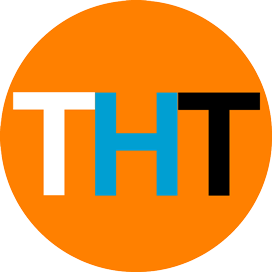Introduction
In a world that often measures worth by the numbers on a scale or the conformity to subjective standards, Sheahan Keinick stands as a testament to the transformative power of dance. As a seasoned dance teacher with over 32 years of experience, Keinick not only challenges societal perceptions of dance but advocates for its profound impact on personal and professional development. In a candid conversation, Keinick shared insights into her journey, the misconceptions surrounding dance, and why hiring a dancer could be the key to fostering success in any field.
Defying Stereotypes
Keinick’s journey into dance was not without its challenges. “I stepped on the scale and realized I might lose my job,” she candidly admitted. However, she quickly emphasized that a dancer’s worth extends far beyond physical appearance. “We are judged by many things, all the wrong things,” she remarked, citing instances where directors focused on inconsequential details like lipstick color or hair shade.
These expectations, as Keinick pointed out, can be both ridiculous and highly subjective. Despite dedicating years to her passion, she faced skepticism from family and friends who questioned the legitimacy of dance as a viable career. “The tragedy is, we tend to dismiss anything artistic as non-essential,” she lamented.
Dance Education Goes Beyond the Studio
Keinick, as a dance teacher, brings a unique perspective to the conversation. Contrary to popular belief, she argues that dance training encompasses more than just twirling about a room and adhering to subjective opinions. “Dance training has much less to do with imposed aesthetics and more about awareness, grit, and grace,” she emphasized.
Scholars, Keinick pointed out, have identified numerous benefits of dance education. Improved academic achievement, enhanced creativity and innovation through abstract reasoning, and the development of entrepreneurial skills are just a few examples. Moreover, dance plays a crucial role in fostering confidence and contributing to mental health and neurological well-being, as seen in its therapeutic applications for conditions like Parkinson’s.
Life Skills Cultivated Through Dance
As Keinick delved into the broader implications of dance education, she highlighted the transferable life skills cultivated in the studio. “By participating in dance at some point, in some form, we are learning essential skills for successful and fulfilling personal and professional lives,” she affirmed.
The benefits are diverse, ranging from promoting healthy, active lifestyles to using movement as a tool to alleviate stress. Dance, Keinick asserted, has the power to connect people in ways that words cannot, fostering a deeper connection to one’s body and contributing to an overall better quality of life.
Dance as a Foundation for Success
Drawing from her experiences, Keinick painted a vivid picture of how dance education prepares individuals for success in any chosen pathway. Graduating students, she proposed, carry with them a wealth of embodied knowledge that extends beyond the studio. Imagine a job interview where the candidate seamlessly taps into the lessons learned in dance: breath control, awareness, confident posture, observation of body language, improvisation, and problem-solving skills.
Keinick’s own journey through a Master’s research process revealed the practical application of these skills. “Adaptability, time management, and resilience are all things I learned in my years of dance training,” she reflected. These skills, honed in the dance studio, guided her through personal challenges, including a divorce, navigating the complexities of the COVID era, building a new home, delving into real estate, and raising two teenage boys and a golden retriever.
Investing in Yourself Through Dance
Keinick passionately advocates for the value of dance education as an investment in oneself. “To dance is to invest in yourself,” she declared. Dance, according to Keinick, provides a framework for successful and employable futures, offering integrated benefits related to health and wellness.
She concluded, “In our real jobs and our real lives, we could all use more awareness, grit, and grace.” In a society that often overlooks the profound impact of the arts, Sheahan Keinick stands as a beacon, reminding us that the skills cultivated in the dance studio are not just for the stage but for navigating the complexities of life with resilience and grace. Hiring a dancer, it seems, is not just about finding someone with technical expertise but someone equipped with the tools for success in an ever-evolving world.








